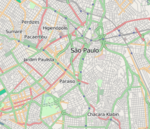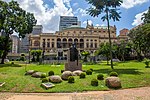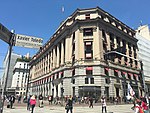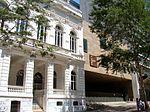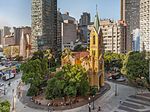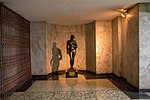Theatro Municipal (São Paulo)
1911 establishments in BrazilCentral Zone of São PauloCulture in São PauloMusic venues completed in 1911National heritage sites of São Paulo (state) ... and 4 more
Opera houses in BrazilTheatres completed in 1911Theatres in São PauloTourist attractions in São Paulo

Municipal Theatre of São Paulo is a theatre in São Paulo, Brazil. It is regarded as one of the landmarks of the city, significant both for its architectural value as well as for its historical importance, having been the venue for the Week of Modern Art in 1922, which revolutionised the arts in Brazil. The building now houses the São Paulo Municipal Symphonic Orchestra, the Coral Lírico (Lyric Choir) and the City Ballet of São Paulo.
Excerpt from the Wikipedia article Theatro Municipal (São Paulo) (License: CC BY-SA 3.0, Authors, Images).Theatro Municipal (São Paulo)
Rua Vinte e Quatro de Maio, São Paulo República (República)
Geographical coordinates (GPS) Address Website External links Nearby Places Show on map
Geographical coordinates (GPS)
| Latitude | Longitude |
|---|---|
| N -23.545277777778 ° | E -46.638611111111 ° |
Address
Teatro Municipal de São Paulo (Theatro Mvnicipal de São Paulo)
Rua Vinte e Quatro de Maio
01041-001 São Paulo, República (República)
São Paulo, Brazil
Open on Google Maps
